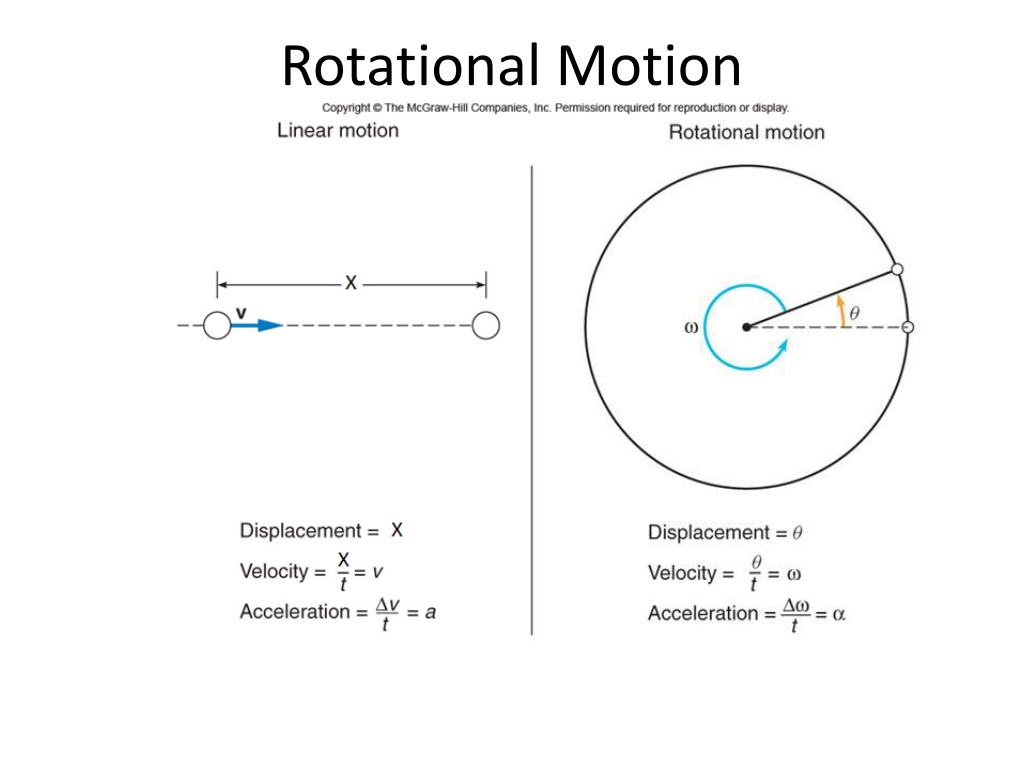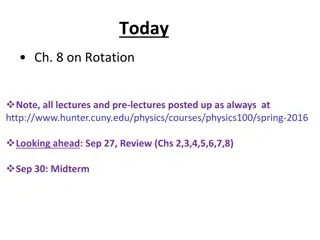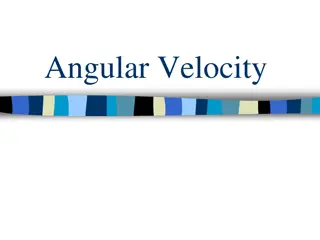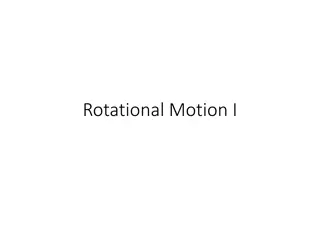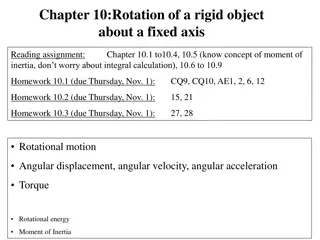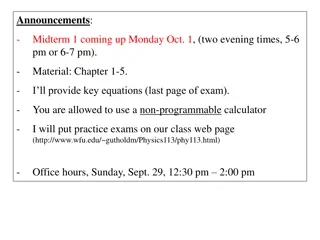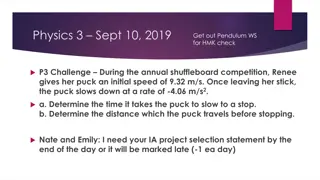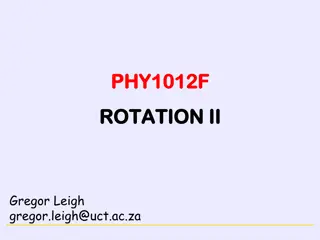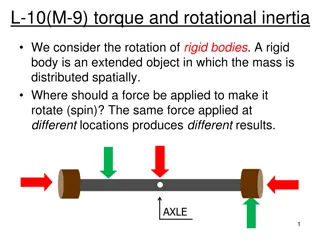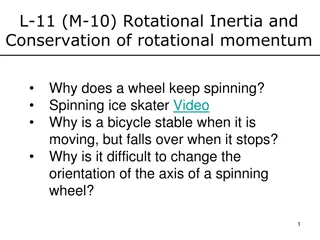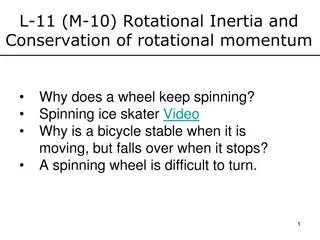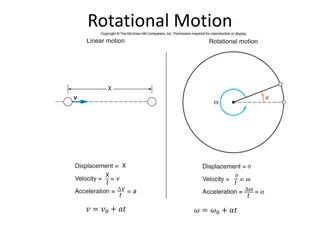Understanding Rotational Motion in Physics
Exploring rotational motion in physics involves understanding angular velocity, torque, moment of inertia, and rotational kinetic energy. This comprehensive guide covers concepts such as the conversion between degrees and radians, angular variables, Newton's second law for rotating bodies, and moment of inertia calculations for point masses and extended objects. Delve into real-world examples and problems to enhance your knowledge of rotational mechanics.
Download Presentation

Please find below an Image/Link to download the presentation.
The content on the website is provided AS IS for your information and personal use only. It may not be sold, licensed, or shared on other websites without obtaining consent from the author. Download presentation by click this link. If you encounter any issues during the download, it is possible that the publisher has removed the file from their server.
E N D
Presentation Transcript
The angle In radian measure, the angle is defined to be the arc length s divided by the radius r.
Conversion between degree and radian rad = 1800
Example Problems Earth rotates once every day. What is the angular velocity of the rotation of earth? What is the angular velocity of the minute hand of a mechanical clock?
Angular Variables and Tangential/Linear Variables In the ice-skating stunt known as crack- the-whip, a number of skaters attempt to maintain a straight line as they skate around one person (the pivot) who remains in place.
Torque, Torque depends on the applied force and lever-arm. Torque = Force x lever-arm Torque is a vector. It comes in clockwise and counter-clock wise directions. Unit of torque = N m P: A force of 40 N is applied at the end of a wrench handle of length 20 cm in a direction perpendicular to the handle as shown above. What is the torque applied to the nut?
Newtons 2nd law and Rotational Inertia
NEWTONS SECOND LAW FOR A RIGID BODY ROTATING ABOUT A FIXED AXIS
Moment of Inertia of point masses Moment of inertia (or Rotational inertia) is a scalar. SI unit for I: kg.m2
Moment of Inertia, I for Extended regular- shaped objects
ROTATIONAL KINETIC ENERGY
Application of Torque: Weighing P. A child of mass 20 kg is located 2.5 m from the fulcrum or pivot point of a seesaw. Where must a child of mass 30 kg sit on the seesaw in order to provide balance?
Angular Momentum The angular momentum L of a body rotating about a fixed axis is the product of the body's moment of inertia I and its angular velocity with respect to that axis: Angular momentum is a vector. SI Unit of Angular Momentum: kg m2/s.
Conservation of Angular Momentum
Angular momentum and Bicycles Explain the role of angular momentum in riding a bicycle?
Equations Sheet MOTION Linear t d; (d = r ) v = d/t; (v = r ) = /t a = v/t; (a = r ) v = v0 + at v2 = v02 + 2ad d = v0t + at2 d = (v + v0)t force = F Mass =m Rotational t Time interval Displacement Velocity Acceleration = /t = 0+ t 2= 02+ 2 = 0t + t2 = ( + 0)t torque = Rotational inertia = I = miri2 net= I L= I Ii i= If f Kinematic equations To create Inertia Newton s 2nd Law Momentum Conservation of momentum Fnet = ma p = m V mivi = mfvf Kinetic Energy Translational Kinetic Energy = TKE = mv2 W=F d Rotational Kinetic Energy = RKE = I 2 W= Work
Problem A woman stands at the center of a platform. The woman and the platform rotate with an angular speed of 5.00 rad/s. Friction is negligible. Her arms are outstretched, and she is holding a dumbbell in each hand. In this position the total moment of inertia of the rotating system (platform, woman, and dumbbells) is 5.40 kg m2. By pulling in her arms, she reduces the moment of inertia to 3.80 kg m2. Find her new angular speed.
